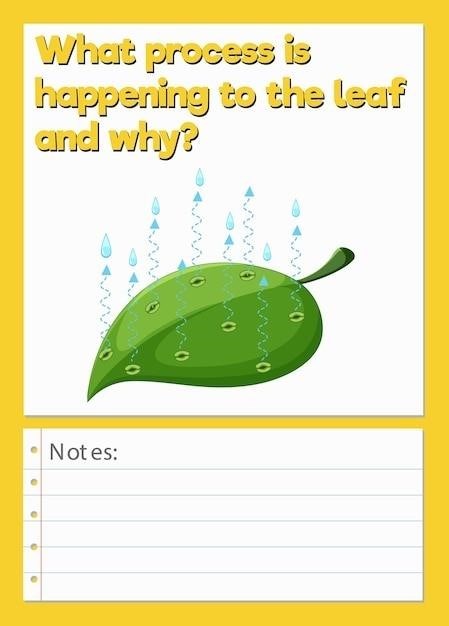How Full Is Your Bucket? PDF Availability
Finding a PDF of “How Full Is Your Bucket?” requires careful consideration of legal and illegal sources. Many websites offer free downloads, but their reliability and legality vary greatly. Proceed with caution, ensuring the source is trustworthy to avoid malware or copyright infringement.
Where to Find the Book in PDF Format
Locating a legitimate PDF version of “How Full Is Your Bucket?” might prove challenging. While various online platforms claim to offer free downloads, exercising caution is crucial. Many sources lack verification, potentially exposing your device to malware or viruses. Reputable e-book retailers like Amazon or Google Play Books are safer alternatives for purchasing the digital version. Libraries often provide e-book access through platforms like OverDrive or Libby. These platforms typically require a library card for access, offering a legal and secure way to read the book digitally. Remember to always prioritize safe and legal methods when seeking digital content.
Legal and Illegal Download Sources
The internet presents a dichotomy when searching for “How Full Is Your Bucket?” PDFs. Legal avenues include purchasing the ebook from authorized retailers like Amazon Kindle or Google Books, or borrowing it through a library’s digital lending platform. These methods ensure you obtain a virus-free copy while respecting copyright laws. Conversely, numerous websites offer free downloads, but these often operate outside legal boundaries. Downloading from these sources risks malware infections, as well as potential legal repercussions for copyright infringement. The risks associated with illegal downloads significantly outweigh any perceived benefits, making legal acquisition the only responsible choice for responsible readers. Always prioritize ethical and safe practices when obtaining digital books.
Assessing the Reliability of Online PDF Sources
Before downloading a PDF of “How Full Is Your Bucket?” from an online source, carefully scrutinize its legitimacy. Look for established websites with positive reviews and a history of providing legitimate content. Be wary of sites with excessive pop-up ads, poor grammar, or suspicious file names. Check the website’s domain name for red flags; an unprofessional or unfamiliar URL could indicate an unreliable source. Consider the file size; an unusually small or large file may suggest a corrupted or incomplete version. If possible, read user reviews or comments to gauge other users’ experiences with the website. Remember that downloading from untrusted sources poses significant risks, including malware and viruses that could harm your device. Prioritize safety and reliability; only download from reputable sources to ensure a safe and legal reading experience.

The Book’s Content and Key Concepts
“How Full Is Your Bucket?” explores the impact of interactions on well-being. It uses the “bucket” metaphor to illustrate how positive and negative interactions affect emotional states and overall health.
The Bucket Metaphor and Its Significance
Central to “How Full Is Your Bucket?” is the powerful metaphor of an invisible bucket representing each person’s emotional state. This bucket is constantly being filled or emptied by our interactions with others. Positive interactions, kind words, acts of service, and expressions of appreciation fill the bucket, contributing to happiness and well-being. Conversely, negative interactions – criticism, negativity, and unkindness – empty the bucket, leading to feelings of depletion and unhappiness. The book emphasizes the cumulative effect of these interactions over time, highlighting how consistently filling one’s bucket through positive actions leads to sustained happiness, improved relationships, and increased productivity. Conversely, neglecting to fill one’s own bucket or consistently emptying it through negative interactions can have detrimental effects on overall well-being. The bucket metaphor serves as a simple yet profound illustration of the interconnectedness between our actions and our emotional state.
Strategies for Increasing Positive Emotions
The book “How Full Is Your Bucket?” doesn’t just diagnose the problem of emotional depletion; it actively provides actionable strategies to cultivate positive emotions and fill your metaphorical bucket. These strategies are not complex, but rather focus on simple, everyday actions that can significantly impact your emotional well-being. The authors emphasize the importance of showing appreciation, expressing gratitude, and offering sincere compliments. These small acts of kindness, even seemingly insignificant ones, have a ripple effect, not only filling the recipient’s bucket but also boosting the giver’s emotional state. Beyond outward actions, the book also encourages self-compassion and mindful self-care as crucial components of maintaining a full bucket. By prioritizing self-care and practicing gratitude, individuals can cultivate inner resilience and emotional strength, thereby creating a more positive and fulfilling emotional landscape.
Impact on Relationships, Productivity, and Health
The “How Full Is Your Bucket?” philosophy extends far beyond mere emotional well-being; it profoundly impacts various aspects of life. Stronger relationships are a direct result of consistently filling each other’s buckets through acts of kindness, appreciation, and understanding. This positive emotional climate fosters trust, empathy, and deeper connections. Productivity also sees significant improvement. When individuals operate from a place of emotional fullness, they are more likely to be engaged, motivated, and resilient in the face of challenges. This translates to increased efficiency, creativity, and overall job satisfaction. Furthermore, the book highlights the crucial link between emotional well-being and physical health. Chronic negativity and emotional depletion can weaken the immune system and increase vulnerability to illness, while a consistently full bucket enhances overall health and longevity. Therefore, maintaining emotional positivity is not just about feeling good; it’s an investment in stronger relationships, greater productivity, and improved physical well-being.

Related Resources and Adaptations
Explore supplementary materials like “How Full Is Your Bucket? for Kids,” educational resources, and self-reflection tools designed to enhance the book’s core message and practical application.
“How Full Is Your Bucket?” for Kids
An illustrated children’s adaptation of the popular self-help book, “How Full Is Your Bucket? for Kids,” simplifies the core concept of emotional intelligence for young readers. This version, often praised for its engaging storytelling and relatable characters, translates the complex idea of emotional well-being into an accessible narrative suitable for children. The book employs a charming story to illustrate how our words and actions impact others, emphasizing the importance of kindness and positive interactions. Through captivating illustrations and a simple yet powerful metaphor, it effectively conveys the long-term benefits of choosing positive actions. The child-friendly adaptation maintains the essence of the original, making it an excellent resource for parents, educators, and anyone looking to foster emotional intelligence in young children. It’s a valuable tool in teaching children the significance of their interactions and the lasting impact of their choices, promoting empathy and prosocial behavior. Positive reviews frequently highlight the book’s ability to spark conversations about emotions and social interactions, making it a beneficial addition to any child’s reading list.
Educational Resources and Curricula
The principles of “How Full Is Your Bucket?” have inspired the development of various educational resources and curricula designed to foster positive classroom environments and enhance social-emotional learning. These resources often incorporate activities, lesson plans, and classroom management strategies based on the book’s central metaphor. Teachers and educators utilize these materials to create inclusive and supportive learning spaces where students learn to understand and manage their emotions effectively. The curricula may include interactive exercises, discussions, and projects designed to promote empathy, kindness, and respect among students. Some programs integrate the book’s concepts into existing social-emotional learning frameworks, providing a comprehensive approach to character development. These educational resources aim to equip students with essential life skills, such as conflict resolution, communication, and emotional regulation, contributing to a more positive and productive learning experience for all. Many resources are available online or through educational publishers, offering diverse options for educators to adapt and integrate into their teaching practices.
Companion Materials and Self-Reflection Tools
To complement the core message of “How Full Is Your Bucket?”, various companion materials and self-reflection tools have been developed to aid readers in applying the book’s concepts to their daily lives. These resources often include worksheets, journals, or online platforms designed to facilitate self-assessment and personal growth. Readers can use these tools to track their emotional state, identify their “bucket-filling” and “bucket-emptying” behaviors, and develop strategies for increasing positive interactions. Some resources may offer guided meditations or mindfulness exercises to promote emotional well-being. These supplementary materials provide a practical framework for implementing the book’s principles, encouraging readers to actively cultivate positive relationships and enhance their overall well-being. The interactive nature of these tools allows for personalized application of the book’s message, making it a more engaging and effective learning experience. By fostering self-awareness and providing actionable steps, these companion materials maximize the impact of the book’s message.